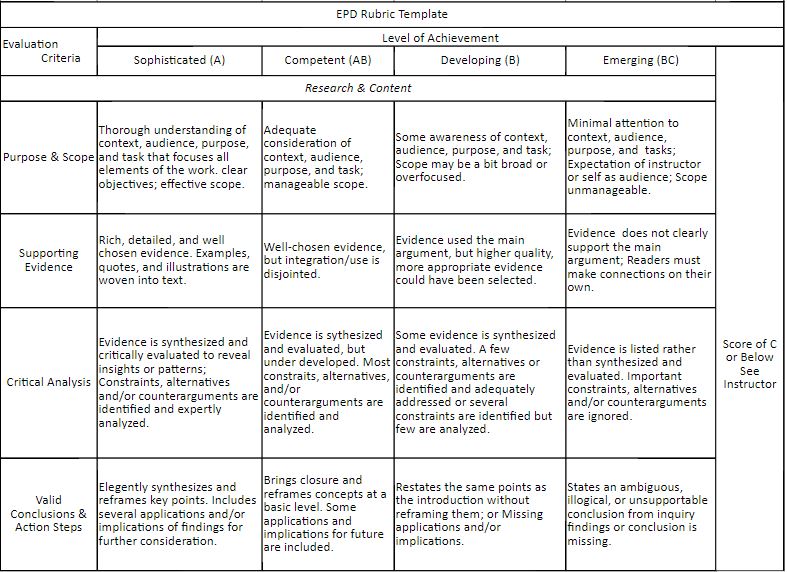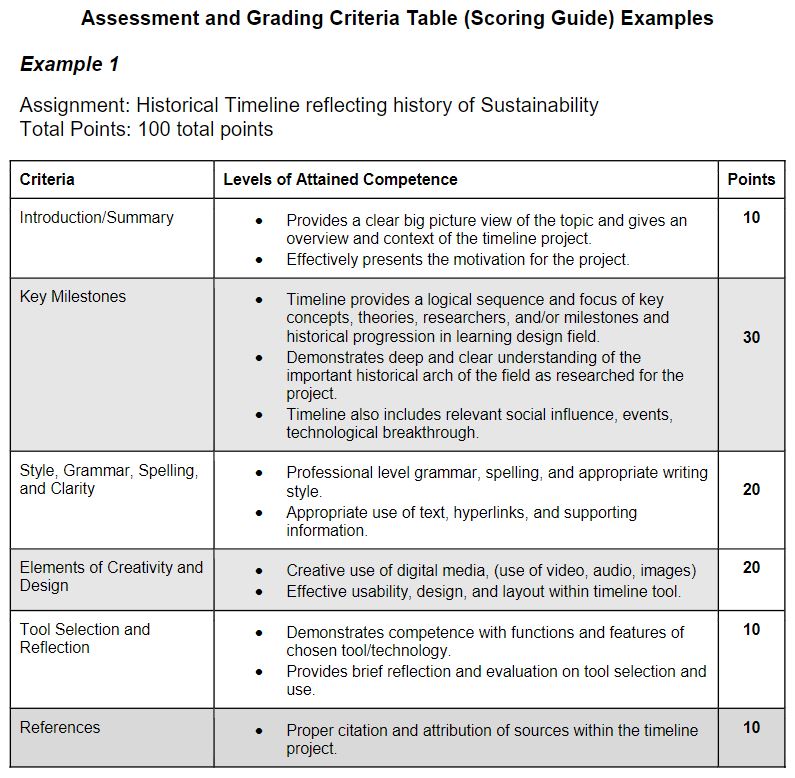InterPro - Teaching and Learning - Creating Rubrics and Scoring Guides
The following document provides information on how to create and use rubrics in your course.
Benefits of using grading and evaluation criteria:
- save time
- communicate expectations to students
- create transparency with students about how their work is being evaluated and graded
- increase consistent and equity in evaluation across a course
- easily identify patterns in student performance
- empower students to self and peer-review their own work
Getting started with Rubrics
- choose 1-2 assignments to start
- consider creating a rubric for larger assessments that are time intensive to grade and may need clearer expectations (e.g. team project, final presentation, etc.)
- consider creating rubrics for assessments that repeat throughout the term (e.g. discussion forum responses)
How to Create a Rubric
- identify the assessment to use the rubric
- identify the learning outcomes to be demonstrated in this assessment - these become the evaluation criteria
- identify the levels of achievement by which you will evaluate the demonstrated skills, knowledge
How to Access InterPro Rubric Templates on Canvas for Your Course Materials
- Login to Canvas and navigate to your course
- Navigate to the assignment you would like to use the rubric in your course
- Select +Rubric
- Select Find a Rubric
- The College of Engineering should show up and you can select a rubric
- Select Use this Rubric and then it will be attached to your assignment
Current InterPro Rubric Templates Include the following:
- Discussion
- Project/Assignment
- Group Project
See Sample Rubrics
- UW Rubric Template
- EPD Rubric Template
- TeachOnline@UW Sample Rubrics
- Engineering Design Project Rubric
- Interdisciplinary Rubrics
- Oral Presentation Rubric (Allyn and Bacon)
- Writing Rubric
- Group work (Cornell)
- Peer and Self Evaluation of Group Project (Northwestern)
See sample Scoring Guides
Additional Resources

